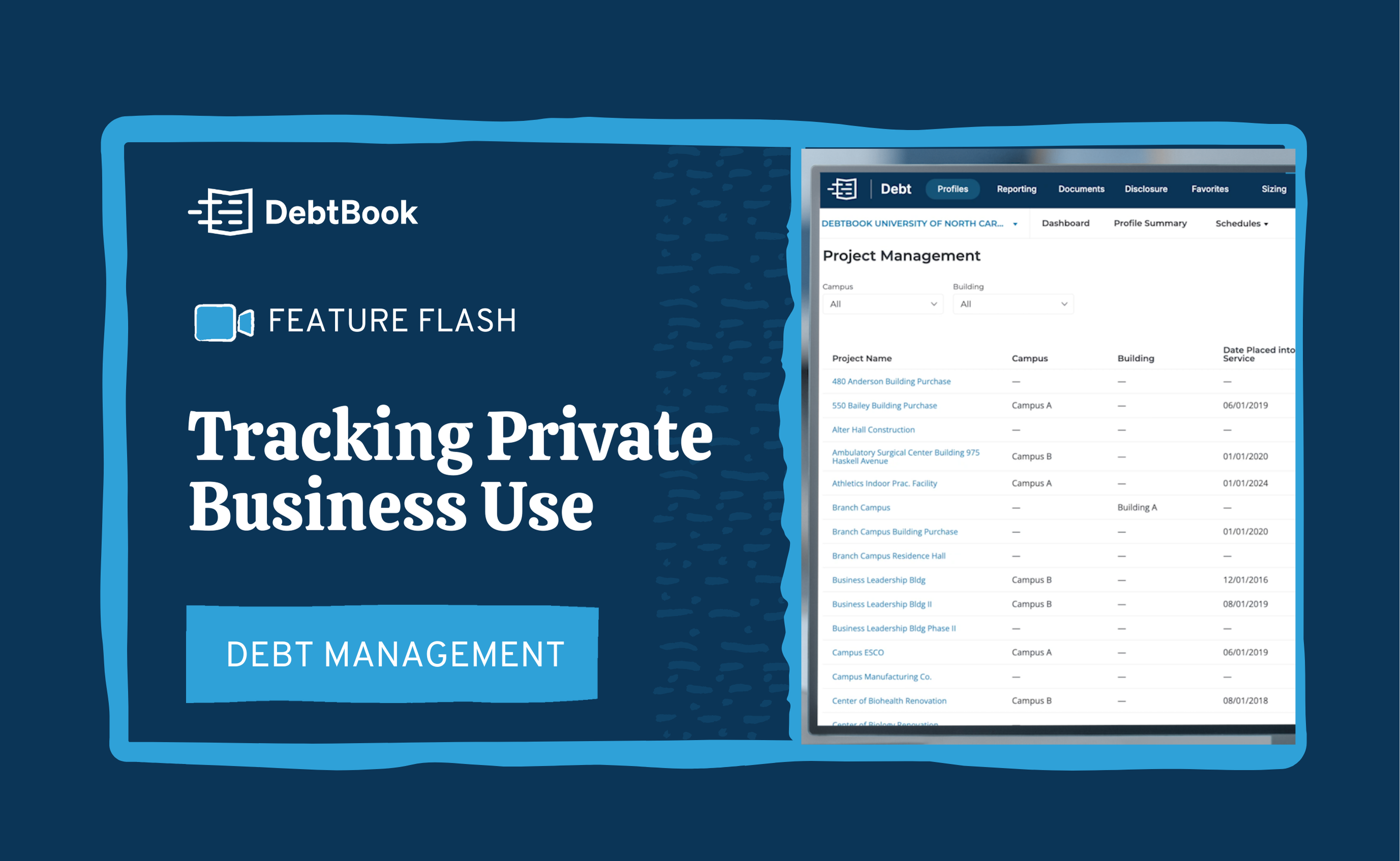Whenever the Federal Reserve raises interest rates, municipal bond rates also climb, making it expensive for governments and nonprofits to finance capital projects.
So, what financing options are available for issuers looking to fund a capital project in a high-interest environment without committing to long-term rates, especially if they anticipate future rate declines?
Our guide covers six short-term financing options that public sector issuers can consider in a high-interest rate environment. To learn more about these strategies and how they can help reduce interest costs, download our comprehensive guide.
What is Short-Term Financing?
Short-term financing refers to borrowing methods used to fund immediate financial needs or projects with a repayment period typically less than one year. Unlike long-term financing, which involves extended commitments and fixed interest rates, short-term financing provides flexibility and adaptability in managing cash flow, especially in volatile interest rate environments.
Key Characteristics of Short-Term Financing for Treasurers:
Short-term financing offers several advantages for treasurers, especially in a high-interest rate environment. Here’s why opting for short-term financing can be more beneficial compared to long-term financing:
- Flexibility: Short-term financing allows issuers to adjust their borrowing strategies based on current financial needs and market conditions.
- Lower Initial Costs: These methods often involve lower upfront costs compared to long-term financing, making them attractive for managing short-term capital requirements.
- Variable Interest Rates: Many short-term financing options have adjustable interest rates, which can be advantageous when anticipating future rate declines.
- Quick Access to Funds: Short-term financing solutions are designed to provide rapid access to capital, facilitating timely project completion and cash flow management.
- Improved Cash Flow Management: Short-term financing aligns more closely with immediate cash needs and project timelines. This alignment ensures that funds are available when necessary, without tying up resources for extended periods.
- Strategic Debt Management: Issuers can strategically mix short-term and long-term debt to optimize their capital structure. This mix allows for better matching of debt obligations with cash flow patterns and financial strategies.
Short-term financing is particularly useful for public sector organizations looking to fund capital projects without locking into long-term interest rates. By utilizing short-term strategies, governments and nonprofits can maintain financial flexibility, optimize cash flow, and potentially reduce overall interest costs.
What is Cash Liquidity Management?
Cash liquidity management is the practice of efficiently overseeing a government or nonprofit’s cash flow to ensure that sufficient liquid assets are available to meet short-term obligations and operational needs. This involves a careful balance between maintaining enough cash on hand and investing excess funds to maximize returns without compromising liquidity.
How Short-Term Financing Can Help with Cash Liquidity Management
Short-term financing plays an important role in effective cash liquidity management by providing immediate access to funds, ensuring that an organization can meet its short-term obligations without disrupting operations.
This type of financing offers flexibility in adjusting to cash flow needs, enabling treasurers to align borrowing with actual expenditure timelines. By utilizing short-term financing options such as drawdown programs, commercial paper, and direct loans from banks, issuers can maintain optimal liquidity levels, minimize the need for large cash reserves, and reduce the risk of cash flow shortages.
Plus, the ability to refinance short-term debt at more favorable rates as market conditions improve further enhances liquidity management, allowing organizations to remain agile and financially resilient. This strategic use of short-term financing ensures that cash is available when needed, improving overall financial stability and operational efficiency.
What’s Inside the Short-Term Financing Treasury Guide?
Our downloadable guide explores six effective short-term financing strategies that treasurers can use to manage costs in a high-interest environment. Here’s a preview of what you’ll find:
Drawdown Programs
Learn how drawdown programs can help manage cash flow efficiently by releasing funds in phases, aligning with expenditure needs, and minimizing capital holding costs.
Variable Rate Bonds
Explore how variable rate bonds, such as VRDOs and FRNs, offer flexible financing options with adjustable interest rates, allowing issuers to adapt to shifting market conditions.
Commercial Paper
Discover how commercial paper can facilitate efficient cash flow management with its short-term financing capabilities, enabling issuers to adjust maturities based on financial needs.
Reimbursement Programs
Understand how reimbursement programs allow issuers to initially fund projects with their own capital and later reclaim costs through tax-exempt reimbursement bonds, offering flexibility and potential cost savings.
Direct Loan from a Bank
Find out how direct loans provide a straightforward interim financing solution, offering flexibility and simplicity for efficient cash flow management and immediate funding needs.
Internal or In-house Banks
Learn how utilizing internal banking can bypass higher-cost bond issuance by using cash reserves to finance projects, saving on borrowing costs and enhancing financial efficiency.
Modern Debt Management for Treasury Operations
No matter which financing strategy you choose, whether it's drawdown programs or internal banks, DebtBook provides a seamless solution for managing all your debt. Our intuitive platform offers comprehensive tools for financial reporting, payment processing, and team collaboration.
With DebtBook’s cloud-based platform, designed specifically for government and nonprofit teams, you can:
- Gain confidence in your data with our single-source data platform.
- Automate reporting tasks, reducing them from weeks to minutes.
- Track processes in a resilient system of record that remains reliable even when employees transition.
- Ensure compliance with ongoing disclosure requirements and more.
- Share access effortlessly with your team or auditors, thanks to unlimited seats.
- Get started quickly with our highly praised implementation and support.
Download the Free 6 Short-Term Financing Strategies Guide for Treasurers
Take control of your debt management with these six short-term financing strategies and learn how to reduce interest costs effectively in a high-interest environment. Get your downloadable guide today and start optimizing your financing options.
Disclaimer: DebtBook does not provide professional services or advice. DebtBook has prepared these materials for general informational and educational purposes, which means we have not tailored the information to your specific circumstances. Please consult your professional advisors before taking action based on any information in these materials. Any use of this information is solely at your own risk







